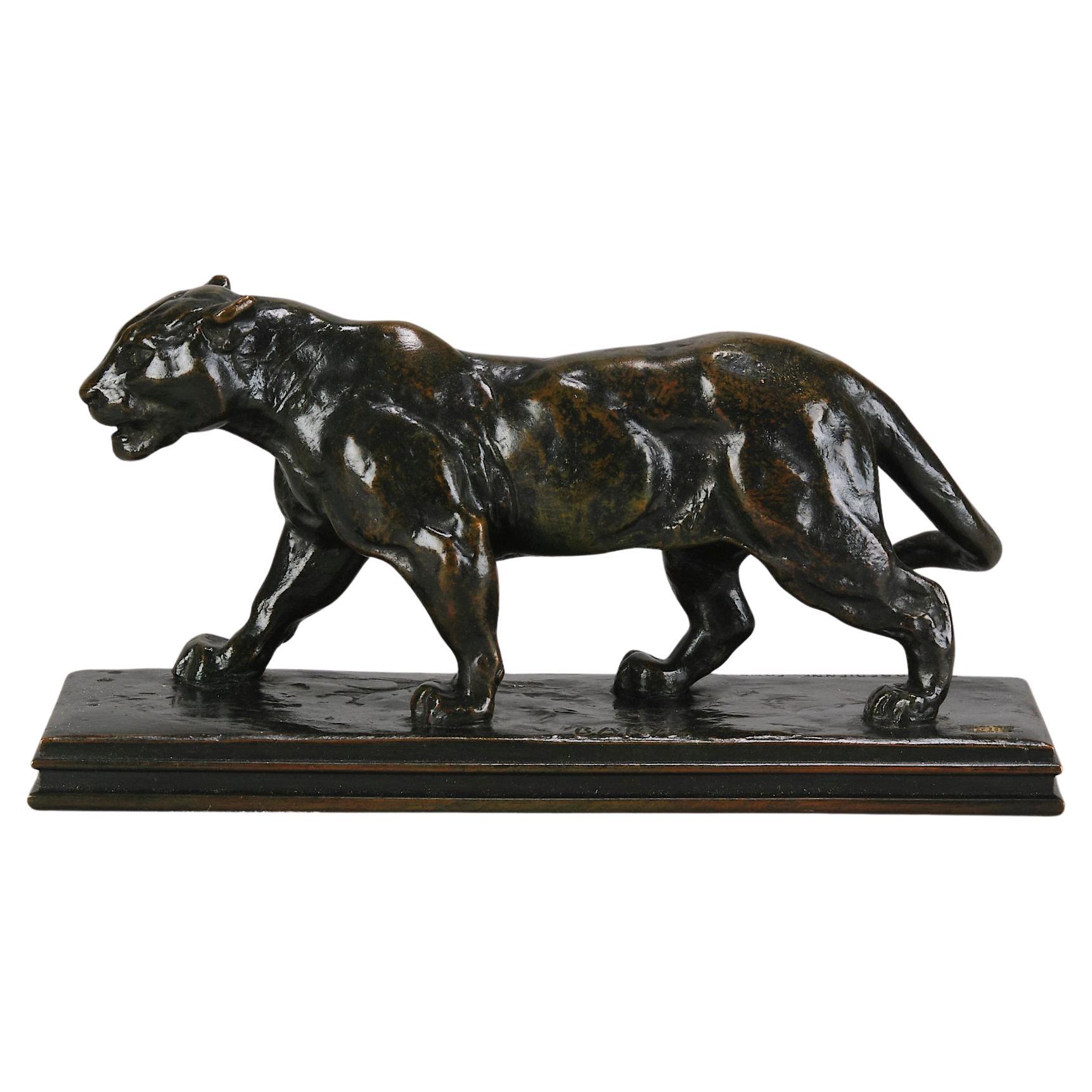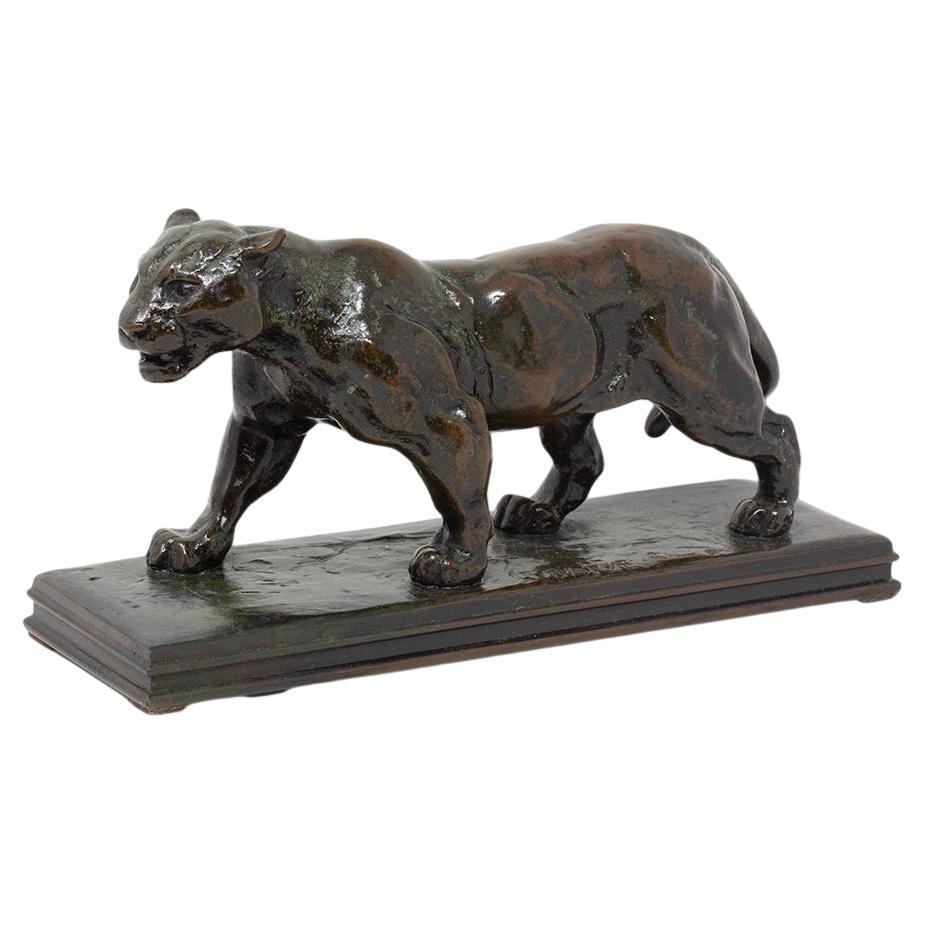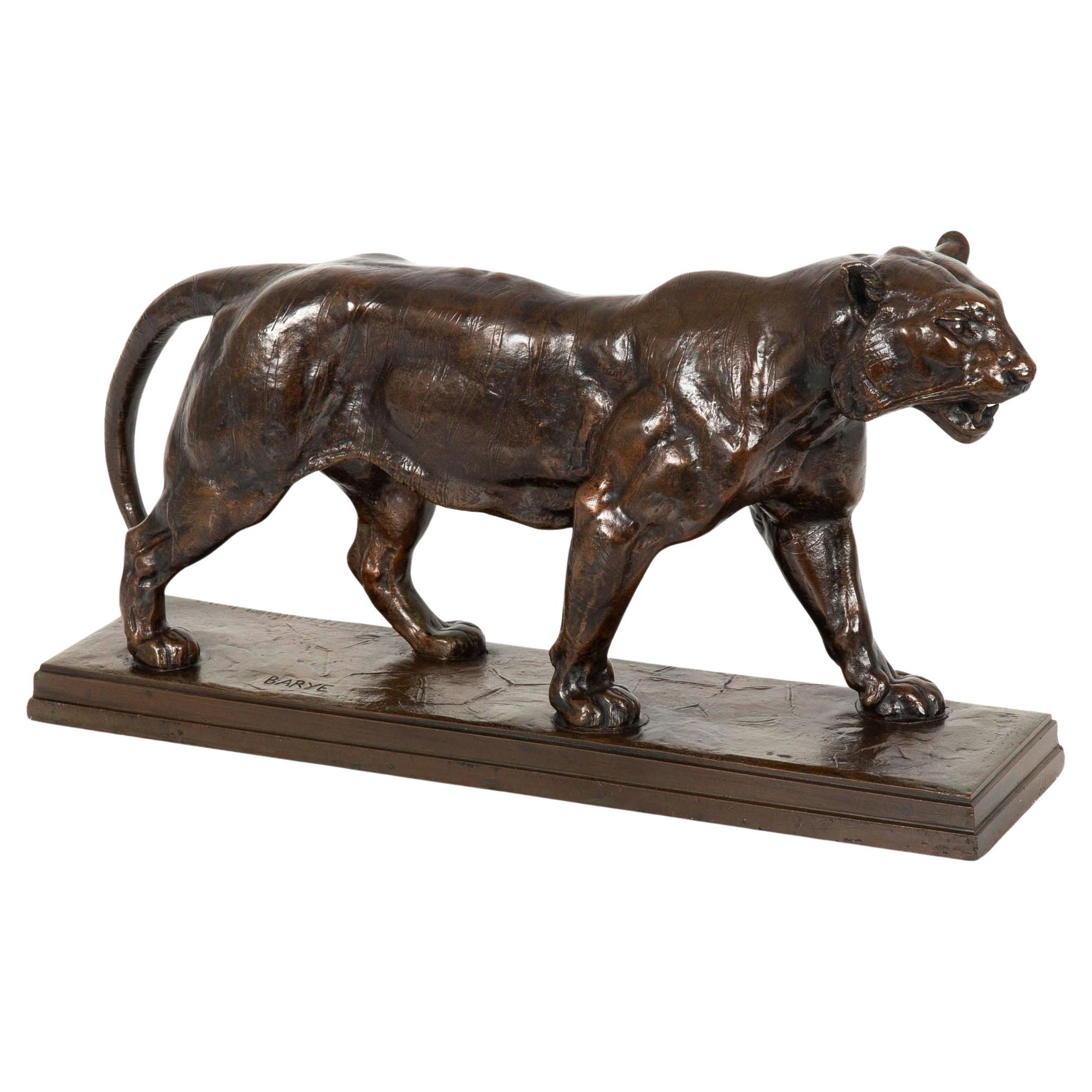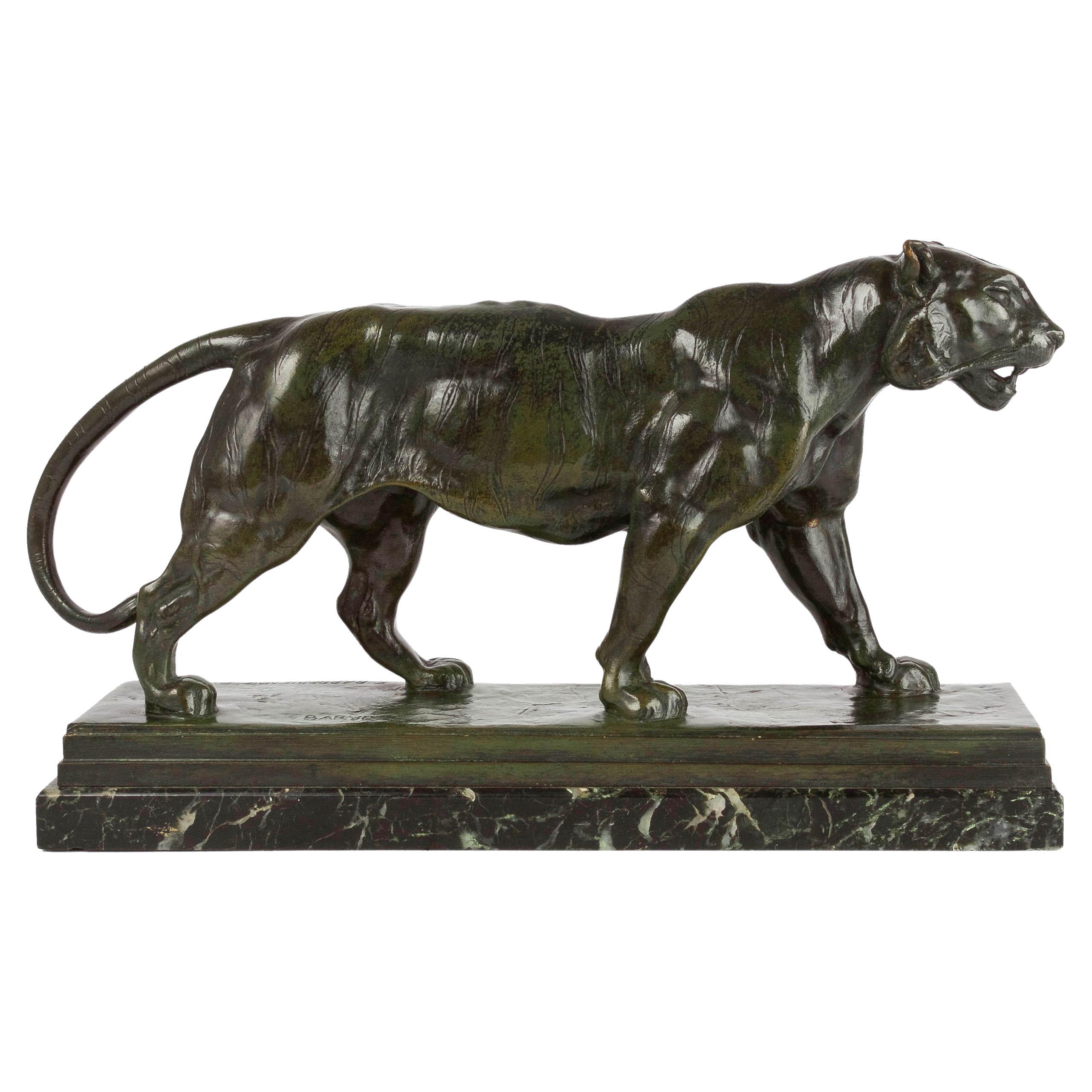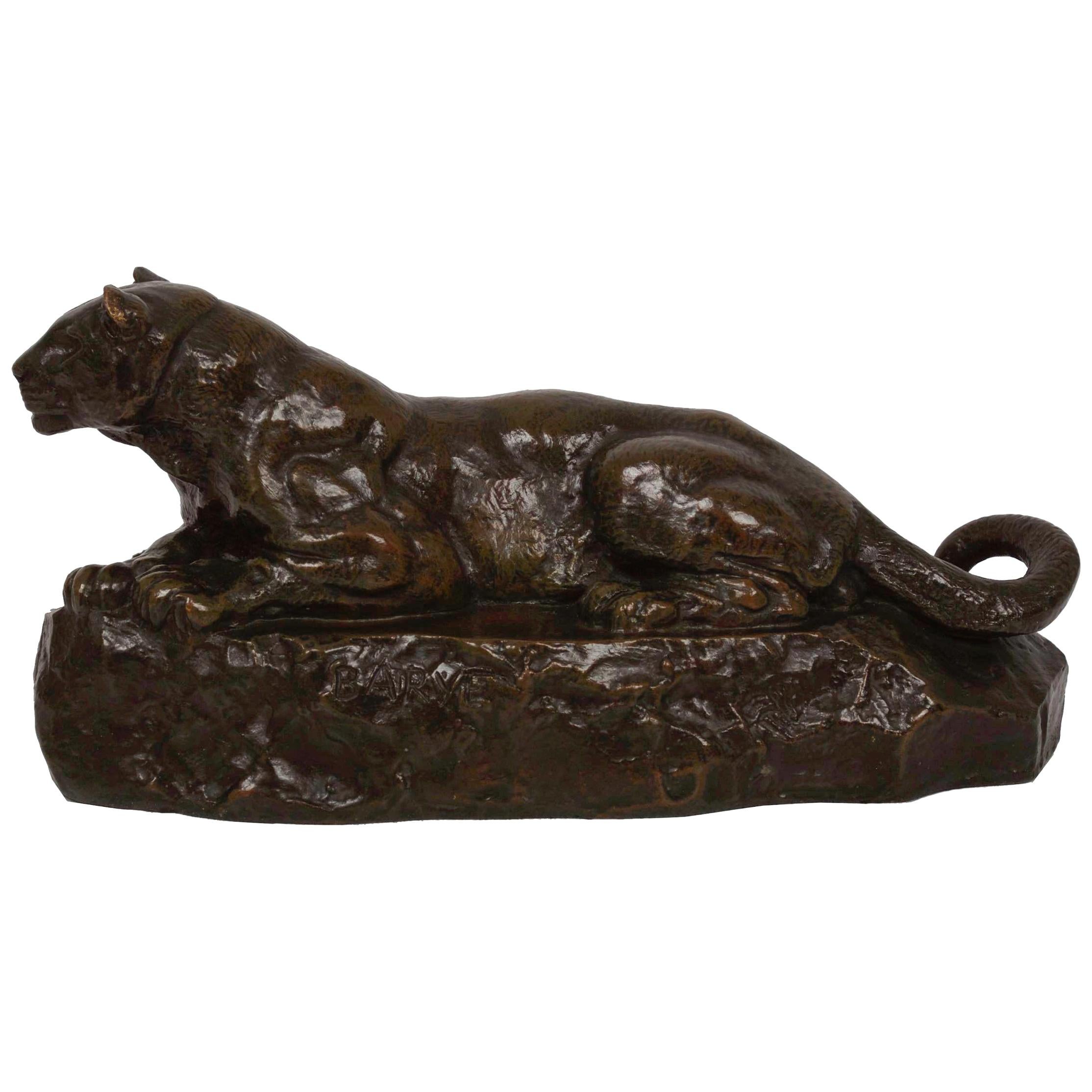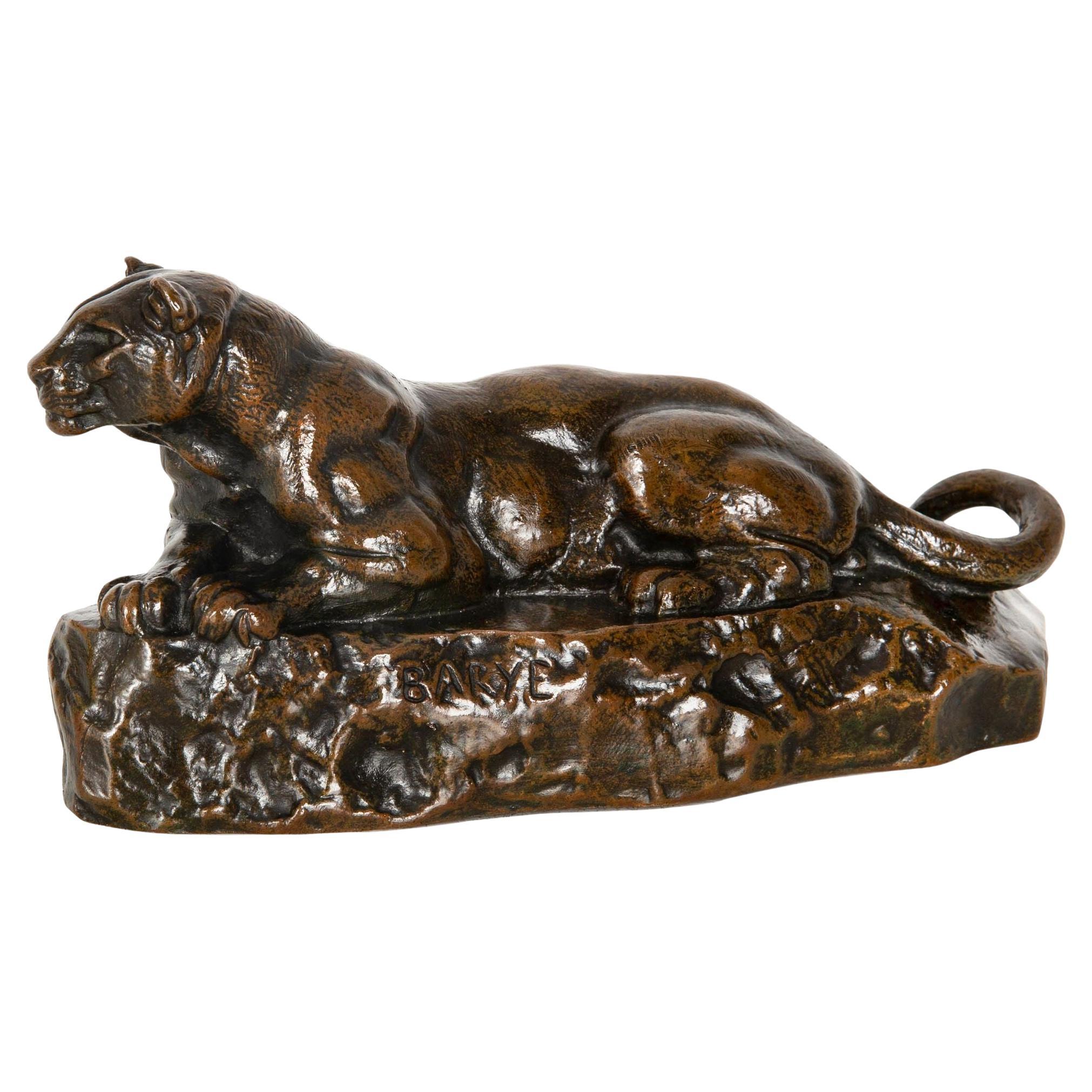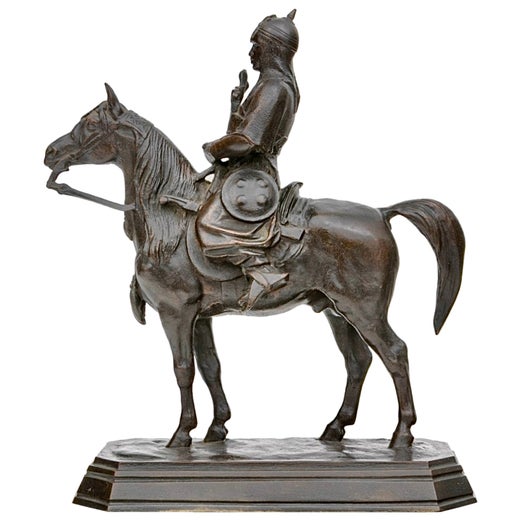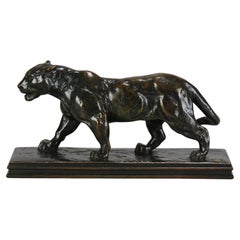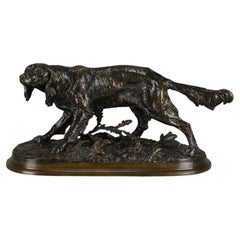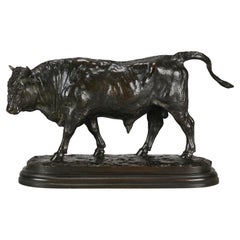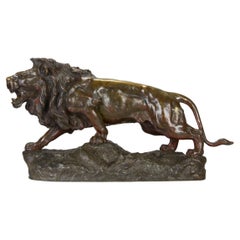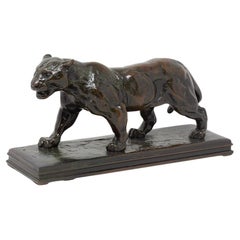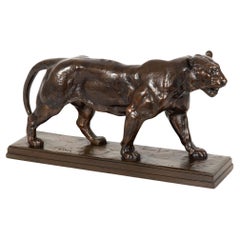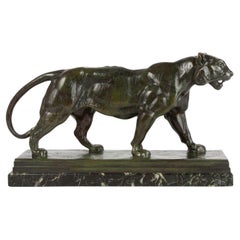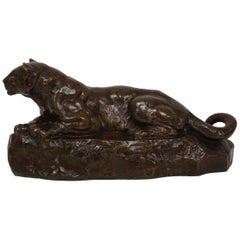Mid 19th Century Animalier Bronze entitled "Jaguar Debout" by Antoine L Barye
Acerca del artículo
- Creador:Antoine-Louis Barye (Artista)
- Dimensiones:Altura: 33,02 cm (13 in)Anchura: 53,34 cm (21 in)Profundidad: 15,24 cm (6 in)
- Estilo:Art Nouveau (Del período)
- Materiales y técnicas:
- Lugar de origen:
- Época:
- Fecha de fabricación:1875
- Estado:Desgaste acorde con la edad y el uso.
- Ubicación del vendedor:London, GB
- Número de referencia:Vendedor: 93821stDibs: LU3216345385292
Antoine-Louis Barye
Hijo de un orfebre, el parisino Antoine-Louis Barye fue un escultor de temas animales y aclamado, no sólo por su aparente habilidad, sino como fundador de lo que se conoció como la Escuela francesa de Animaliers. Entre sus mecenas había representantes del gobierno del estado y de la realeza, como el duque de Orleans y los duques de Luynes, Montpensier y Nemours.
Bien compensado económicamente, Barye pudo comprar los mejores materiales y contratar a los artesanos fundidores más hábiles del país. La fundición que contrató era propiedad de Ferdinand Barbedienne y los moldes de esta época llevaban estampadas las letras FB. Sin embargo, no ganaba mucho dinero con su trabajo porque era tan perfeccionista que a menudo no vendía su obra porque pensaba que no estaba "del todo bien". En 1848, se declaró en quiebra y sus moldes y vaciados de yeso se vendieron junto con los derechos de autor.
La especialidad de Barye era la caza salvaje excitada y de aspecto colérico, como leones, tigres y elefantes, pero también hacía grupos ecuestres y figuras mitológicas. Para realizar representaciones realistas de la anatomía animal, pasó mucho tiempo en el Jardin des Plantes de París. Su primera formación fue como aprendiz de un grabador de metales, pero el alistamiento en el ejército en 1812 puso fin a esa educación. En 1832 había fundado su taller, y en aquella época era único su método de estampar en frío sus moldes de bronce, de modo que cada uno tenía un número especial. Su primera obra, El Milo de Croton, participó en el Salón de París de 1819, donde obtuvo un segundo premio. En 1831, una obra considerada obra maestra, Tigre devorando un gavial, estuvo en el Salón y fue adquirida para los Jardines de Luxemburgo, que ahora se encuentra en el Louvre. Sin embargo, muchas de sus presentaciones posteriores al Salón fueron rechazadas y le enfadaron tanto que, entre 1836 y 1851, se negó a presentar trabajos. En 1851, volvió a exponer en el Salón con Jaguar devorando una liebre, y esta obra, al igual que la de 1831, fue colocada en los Jardines de Luxemburgo y, finalmente, en el Louvre.
A pesar de los problemas con el Salón, Barye recibió muchos elogios por su obra, y el periodo de 1837-48 se consideró el más productivo de su carrera. Sin embargo, en 1848, cuando perdió el control de su obra y ésta fue reproducida por otros, entre ellos Martin y Barbedienne, las esculturas, según algunos profesionales del arte, no están tan hábilmente ejecutadas. En 1848, tras su quiebra, Barye se convirtió en director de Escayolas y Modelos del Louvre, hasta 1850, cuando fue sustituido por Emmanuel Fremiet. Fue una época muy difícil para él. Sin embargo, al cabo de unos años empezó a recibir elogios por la calidad y singularidad de su obra, y la gente empezó a apreciar las poderosas imágenes de su escultura, especialmente la fauna salvaje en su entorno natural. En 1854, fue nombrado Maestro de Dibujo Zoológico en el Musée National d'Histoire Naturelle y ocupó este cargo hasta su muerte en 1875.
- EnvíoRecuperando presupuesto…Envío desde: London, Reino Unido
- Política de devolución
Más de este vendedor
Ver todoAntiguo, Mediados del siglo XIX, Francés, Art Nouveau, Esculturas de ani...
Bronce
Antiguo, Fines del siglo XIX, Francés, Art Nouveau, Esculturas de animales
Bronce
Antiguo, siglo XIX, Francés, Art Nouveau, Esculturas de animales
Bronce
Vintage, Década de 1910, Francés, Art Nouveau, Esculturas de animales
Bronce
Antiguo, Mediados del siglo XIX, Francés, Victoriano, Esculturas de anim...
Mármol, Bronce
Antiguo, Mediados del siglo XIX, Francés, Art Nouveau, Esculturas de ani...
Bronce
También te puede gustar
Antiguo, Fines del siglo XIX, Francés, Belle Époque, Esculturas de animales
Bronce
Antiguo, siglo XIX, Francés, Romántico, Esculturas de animales
Bronce
Antiguo, siglo XIX, Francés, Romántico, Esculturas de animales
Mármol, Bronce
Antiguo, siglo XIX, Francés, Romántico, Esculturas de animales
Bronce
Antiguo, siglo XIX, Francés, Romántico, Esculturas de animales
Bronce
siglo XX, Francés, Otro, Esculturas de animales
Piedra, Bronce
